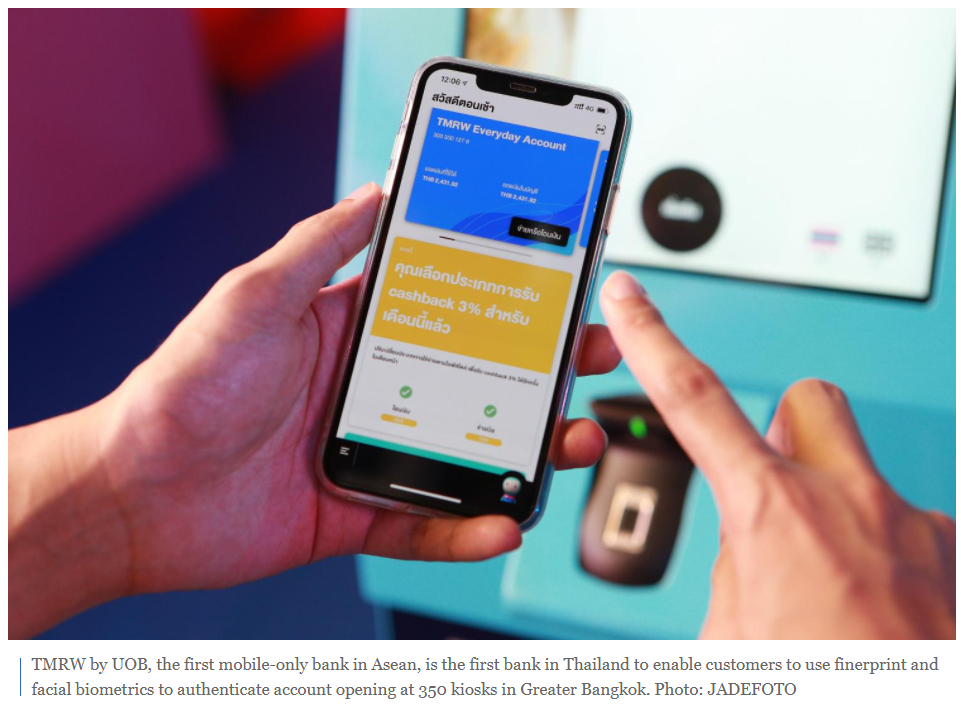Thailand ripe for a digital banking battle
Digital banking is transforming the traditional financial landscape. There are now 249 digital banking players globally — both dynamic upstarts and transitioning legacy operators — as of the end of 2020.
Thailand offers a mature and promising market for this digital banking evolution, but one that requires regulatory guidance if it is to truly be unleashed. Financial engagement is relatively high, and financial services institutions enjoy penetration rates above those of other Southeast Asian peers, with more than 80% of Thais having some form of banking account.
Digital transformation in banking is not new — internet banking triggered a similar transition. What sets this shift apart is its remarkable acceleration, driven by the expectations of customers used to the services of technology brands such as Lazada, Shopee and Grab.
Asia Pacific is now home to 20% of the world’s so-called digital challenger banks (DCB). Most are consortium-led players driven by technology giants and non-financial players, with the likes of WeBank, Rakuten Bank and KakaoBank to name a few.
Competition for market leadership is wide open — no DCB has yet captured more than a 2% share in its operating market. Just 5% of all DCBs worldwide are breaking even.
What unites these players is their ability to tap into a substantial existing ecosystem, benefiting from strong brand recognition, data-rich insights and an established customer base.
Korea’s Kakao Bank is a prime example of success. Since its launch in 2017, it has gained 13 million customers. It boasts a customer penetration rate of 26% with a far lower acquisition cost per customer than traditional banks, using the significant ecosystem of parent company Kakao Corp.
Thailand is one of Southeast Asia’s most receptive markets to DCBs. A recent study by The Asian Banker and the data analytics company Fico showed 78% of respondents expressed positive sentiment toward digital banking.
UOB of Singapore has seized the opportunity in Thailand with the creation of its popular TMRW digital offering, expanding on plans to competitively build a digital retail bank to scale outside Singapore. Launched in Thailand in 2019, TMRW managed to triple its customer base in just six months thanks to its focus on user experience.
TMRW continues to evolve rapidly to meet customer wants and increase engagement while reducing cost of acquisition. It has focused on emotional engagement and personalisation to drive customer growth.
Southeast Asia offers promising ground for digital banking growth, with large, underserved populations, reliable economic growth and high digital penetration.
The relatively mature nature of Thailand’s banking industry offers a firm foundation for the successful integration of digital banking services in future, but perhaps also removes the urgency witnessed in other countries in Southeast Asia.
Despite the broadly promising landscape, Thailand is one of the few nations in the region that is yet to release a comprehensive digital banking licensing roadmap. Malaysia, the Philippines and Singapore have opened applications or granted licences for fresh digital banks, attracting significant industry interest.
Bank of Thailand representatives have spoken approvingly of the potential of digital banking in Thailand, but no formal process has yet been laid out.
While a roadmap remains absent, Thailand’s use of national digital ID does offer an edge over many neighbouring countries when it comes to the eventual rollout of digital banking. National ID use helps with know-your-customer initiatives for rapid onboarding of customers, and sidesteps the challenges faced by nations like Philippines.
Across the region, incumbent banks looking at new digital approaches must weigh the challenges of transitioning legacy IT infrastructure and organisational processes against the significant hurdles of establishing a winning solution to compete against new entrants.
These operators must find a path to either digitise themselves, launch a separate DCB entity, or establish a secondary brand — potentially supported by fintech partners.
DCBs driven by non-financial institution operators must reflect on the significant complexity of the financial services industry, and how best to apply their existing skills and experience to succeed in this space.
Five models exist for non-banks: lending marketplace platforms, online peer-to-peer lenders, online self-funded lenders, ecosystem platforms capturing value from life events, or true DCBs.
Understanding the local banking landscape is a vital consideration in charting the best path forward. In Thailand, that means an offering that reflects the relatively high banking penetration and provides an attractive offer to encourage already-banked customers to use new digital banking offerings.
While the addressable market is significant, operators face a challenging landscape on a three-part journey: application for partnership agreements, business plan development and regulatory approval; building an effective digital bank structure with agile leadership and appropriate talent; and launching defined channel strategies, marketing initiatives and brand positioning.
With its relatively mature and attractive economy, large population and positive sentiment toward digital banking opportunities, Thailand offers a promising market for digital banking that should be unleashed once the right regulatory roadmap is unveiled.
Source: https://www.bangkokpost.com/business/2158459/thailand-ripe-for-a-digital-banking-battle


 Thailand
Thailand




